
If you’re an avid hiker, you’ve likely heard of a “fourteener” before, but to many, it’s a novel term—likely because there are only four states in which the term applies (Colorado, Alaska, Washington and California).
A fourteener is a mountain that has a summit over 14,000 feet—no small feat when it comes to hiking. The challenge, extreme elevation, and spectacular views from those towering peaks attract hikers from across the country.
If you plan to tackle a fourteener during your time in Colorado, we’d like to introduce you to Sal—night auditor at Devil’s Thumb Ranch and accomplished hiker. Sal has summited 15 fourteeners this summer alone (with a few more on his list for the coming weeks), so we tapped into his expertise to bring you 11 tips for hiking a fourteener.
Without further ado, here are Sal’s tips!
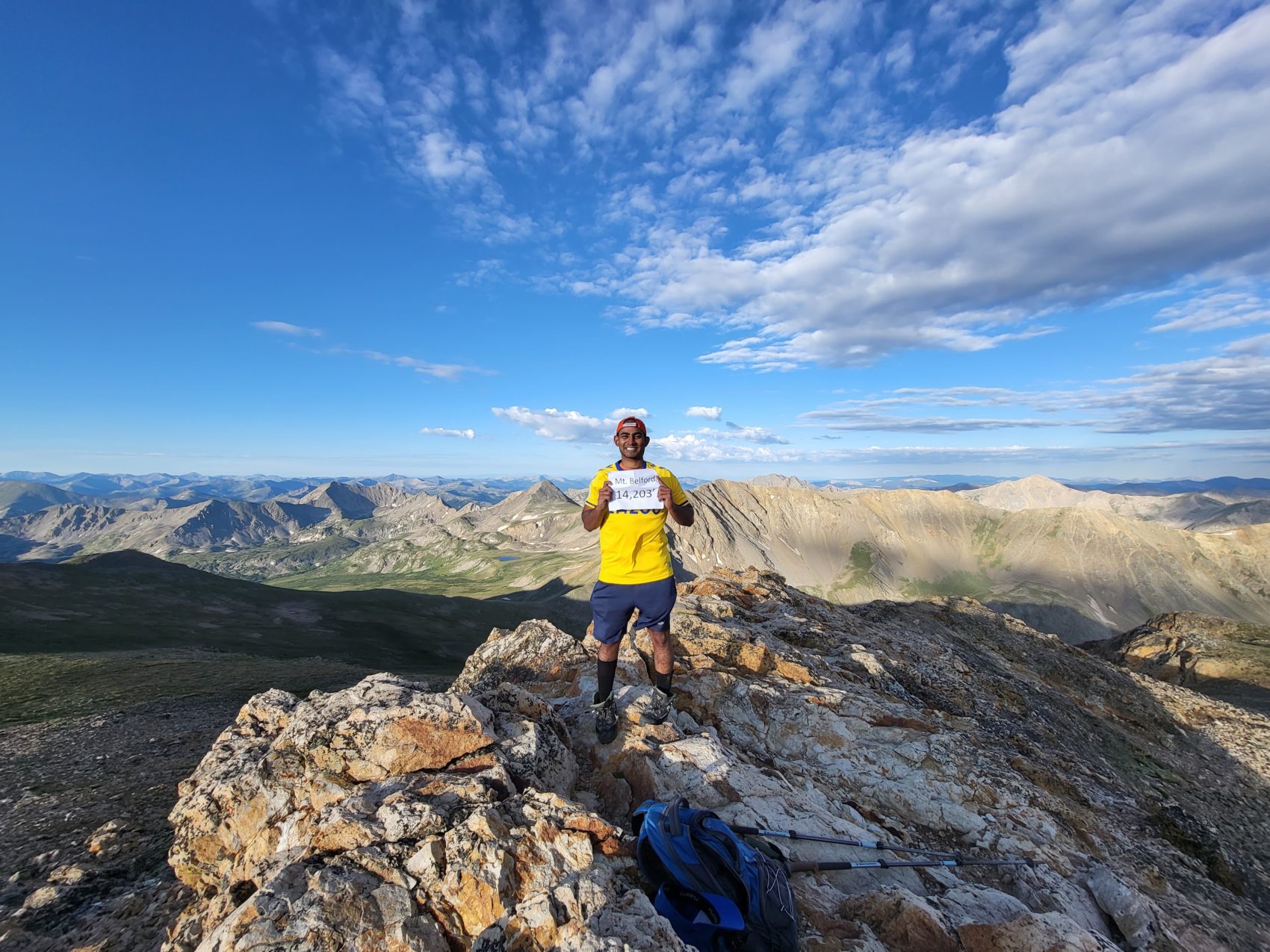
Do Your Research
First, go online to get your plans in order. I’d recommend 14ers.com, a website that gives you a list of all the 14ers in Colorado along with which class they belong to, making it very easy to organize your 14er bucket list. Be sure to make note of the road conditions to get to the trailhead. Many trails can only be accessed with a 4×4 vehicle. If you have 2WD, you can typically access some of the road, but may have to park a few miles away from the actual trailhead parking lot. The All Trails website is another great source for information.
Tell someone where you’re going
It is extremely important to inform someone (family, friends, coworkers) of your hike the day before you do it. Let them know exactly which mountain you are doing and which trail you are taking. Tell them what time you plan on starting & what time you expect to finish. Plan ahead by letting your family/friends know that if you don’t call back within a certain time then they should call an emergency hotline. 6 PM is a reasonable potential time. For safety reasons, no one should really be on a mountain after 6 PM. There is too much risk, even for a simple hike.
Always have a map
Not every trail is well marked, therefore it is imperative that you bring a print map or download an offline map of the trail on your phone or any other electronic device. Sometimes it can be very easy to get off trail while hiking because all the paths look similar. This is true whether you are above or below tree line. This is also helpful towards the summit of your ascent, as many mountains have false summits. I suggest using the All Trails app and downloading the maps they provide. They will even give you a notification when you are venturing off trail.
Check the Weather
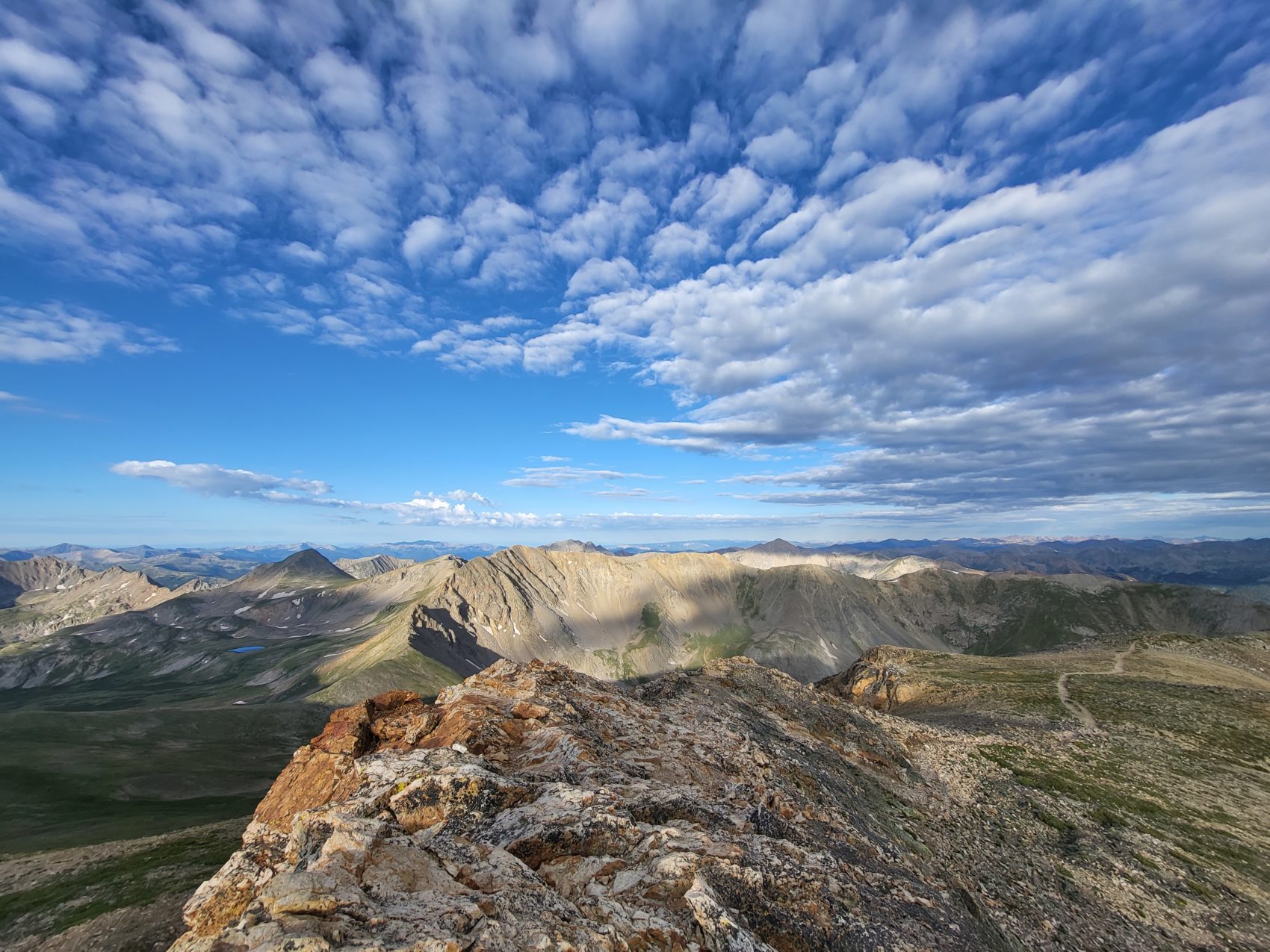
Check the weather before you go. The weather will not always be perfect, but if there is a greater than 40% chance of rain, you should postpone the hike or find a different mountain. The duration and timing of the bad weather matters, as well. For example, if the rain is only scheduled to be light and last for an hour, then it is okay to continue going forward. If the weather is not scheduled to get bad until 2 or 3 PM then it is okay to continue with your hike, but that means you have to start early, no exceptions. Mountain weather can be very unpredictable, even with all of the technology we have today. For example, when I did La Plata Peak, there were supposed to be thunderstorms at 2 PM, so I started my hike at 4 AM. The storms actually came in at 12 PM, 2 hours earlier than expected. By that point I was already below tree line during my descent. Always monitor the weather, and never be above the tree line during a thunderstorm.
Fuel up
The day before the hike eat a carb-heavy meal with plenty of protein. Pasta, Rice, Chicken, Potatoes, and assorted vegetables are great options. I suggest eating this meal at around 3 PM. Eat a fiber-heavy cereal at around 6 PM so you adequately go to the bathroom before your hike. Sleep around 8 PM and then prepare to begin your hike at 5-6 AM. Your wake-up time depends on how long it takes you to drive to the trail head, so you may need to sleep earlier. Pack at least 64-80 oz. of water and a few granola bars for the hike itself. I suggest carrying electrolyte packs/drinks along with your water.
Gear Up
Invest in a good hiking backpack. Visit a store like Sierra Trading Post or a local outdoor shop where there are multiple options to choose from. Ask the staff and they will direct you to the best option for your hike.
Trekking Poles are something I use all the time. They are extremely helpful when it comes to maintaining your balance and help distribute weight more evenly so your backpack doesn’t become too cumbersome. They provide a lot of stability & safety on uneven rocks. For me, trekking poles are most useful during the descent, as I have two very bad knees.
Hiking Boots are a must on any mountain climb. Once again, go to any outdoor shop and the staff will help you make the best selection. Of course, also do your own research before purchasing.
Equipment can become expensive, but it is worth the investment. When it comes to the outdoors, quality is everything.
What to Wear
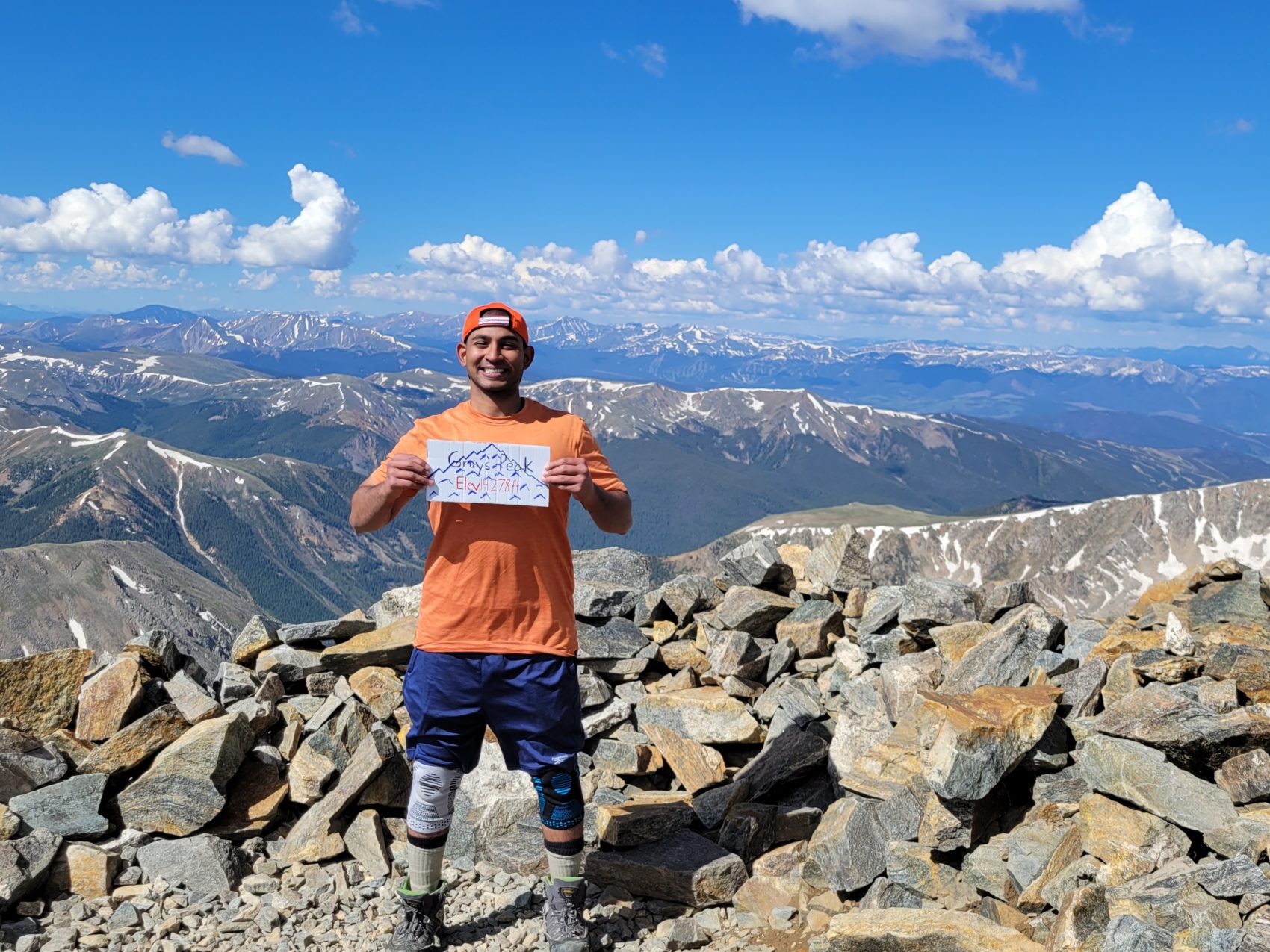
I prefer to wear only a t-shirt & shorts, as well as a baseball cap, but I suggest putting extra clothing such as long pants & a sweater in your backpack in case you get cold. In my experience, even though it will be chilly early in the morning, as soon as you start hiking you will warm up enough where you won’t feel cold. The only thing that usually remains cold are my ears, so wear ear muffs or a beanie. Bring lots of sunscreen, a rain jacket, & bug repellent, too.
Start Early
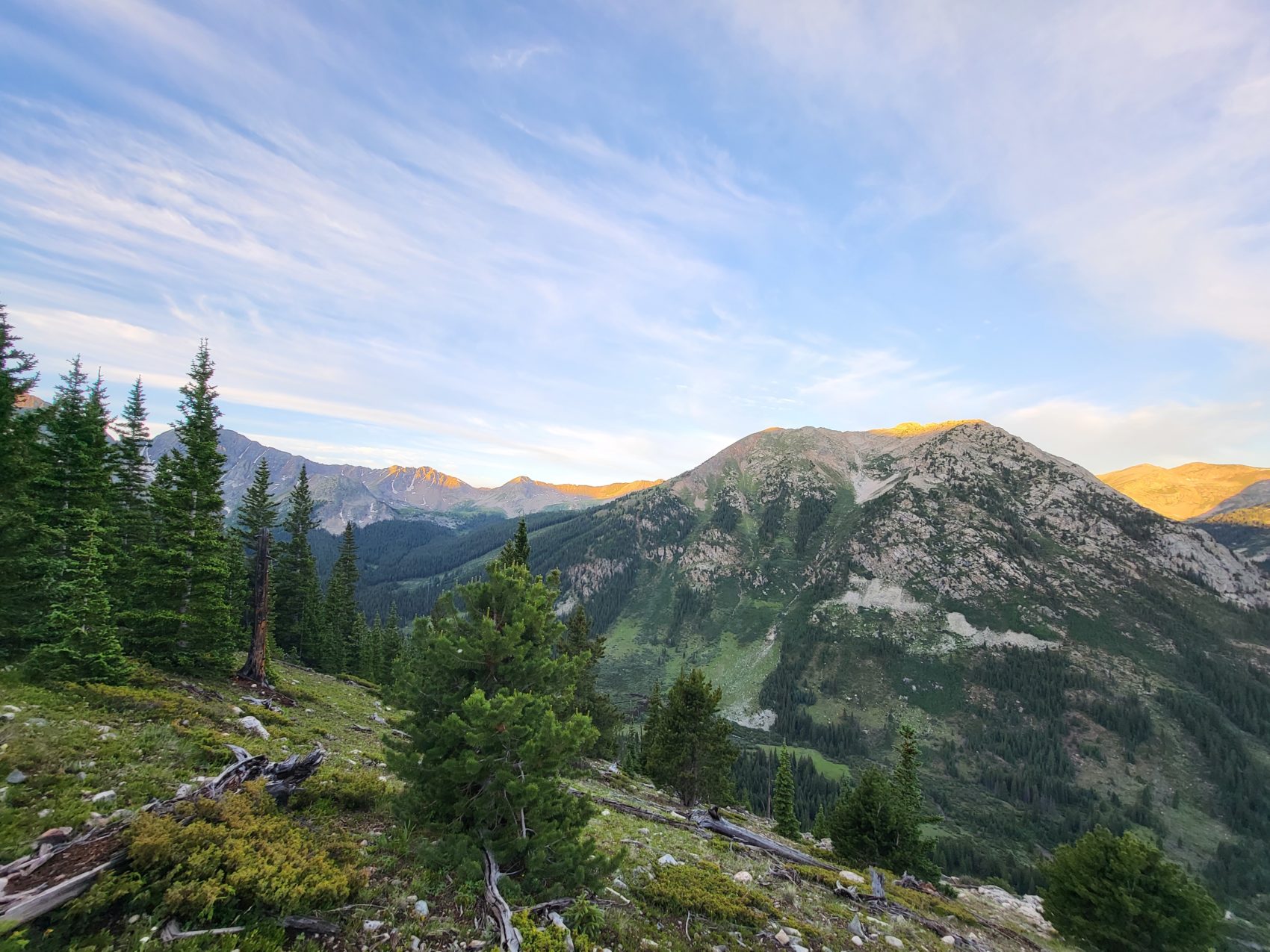
Grab your head lamps and get started right before the sun rises. This gives you ample time to reach the summit, enjoy the views, & descend before any afternoon storms kick in. I prefer to be in descent & below the tree line before 12 PM. Even if there are storms, you will have the trees to cover you.
Another benefit to starting early is that you will be saved from the intense rays of the sun. Even if you have appropriate clothing and sunscreen, getting hit with the full force of the sun without shade isn’t ideal. Also, starting early means the weather will be much cooler, therefore the heat will not drain you of your energy and you won’t deplete your water stores as quickly.
Finally, and perhaps most importantly, if you were to have an accident or injury, there is ample time for you to get rescued before sunset. It’ll be much easier for a rescue team to spot you in daylight. Also, the chance of seeing another hiker is much greater if you start early in the day. Fellow hikers may be able to give you extra food & water while you wait, or even perhaps call for help if you don’t have any cell reception. Better to get hurt at 10 AM than 4 PM.
Stay on Trail
No matter what, do not deviate from the official trail. Not only is the trail the easiest way to get to the summit, but more importantly if you get hurt it’s much easier for the rescue team to get to you if you are on a pre-determined path. Additionally, mountain environments are very sensitive, so by going off trail you risk damaging the natural life.
Tech Support
Hikes can vary in terms of how long they take. Regardless of the time and mileage, you should always bring a portable charger to make sure your devices don’t run out of power. This is especially important if you are using your phone as a map. You will likely have no cell phone service until you get to the top of the mountain. With that being said, you may find it beneficial to invest in a SAT phone, because if there is any emergency, you can contact help right away.
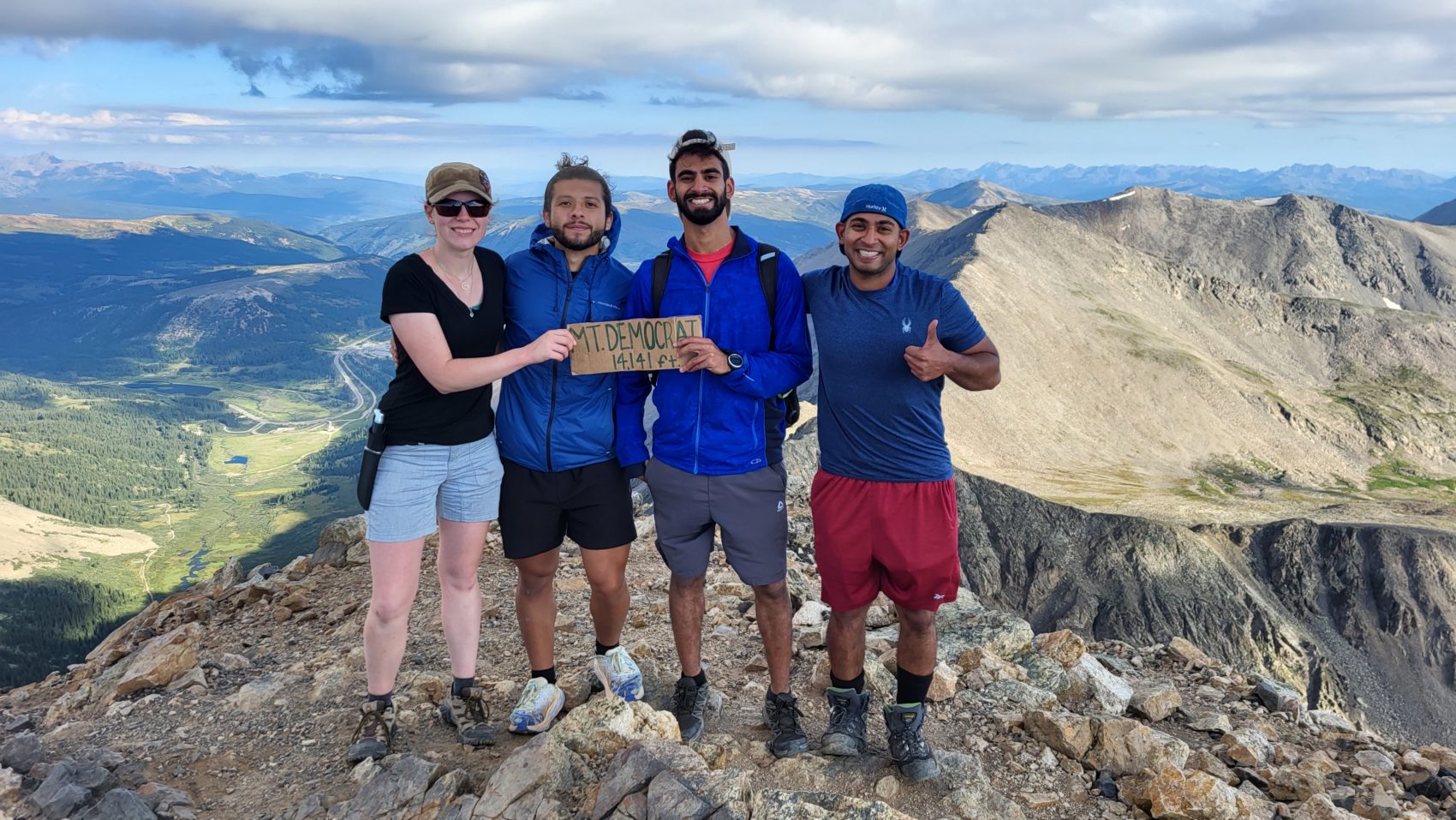
Know Your Limits
This is a tricky topic because everyone is different. If you’ve never done a 14er or a hike above 12,000 feet, you will likely be pushing past your limits. My suggestion for your first 14er is to go with someone who has done one before. They can help guide you and provide you with added motivation—almost become a coach for you. In the end, listen to your body & trust your instincts. It’s okay if you don’t summit. If you feel you need to train a little bit more or get adjusted to the altitude, take the time to do so. Don’t concern yourself with the speed of other hikers; it’s not a race. Your only concern should be to get out and back in one piece.
Thank you, Sal, for passing along your hiking wisdom! If you’re looking for more activities to round out your trip, keep busy with our Year-Round Activity Guide.
Check out our packages and specials here to stay find the home base for your next adventure.